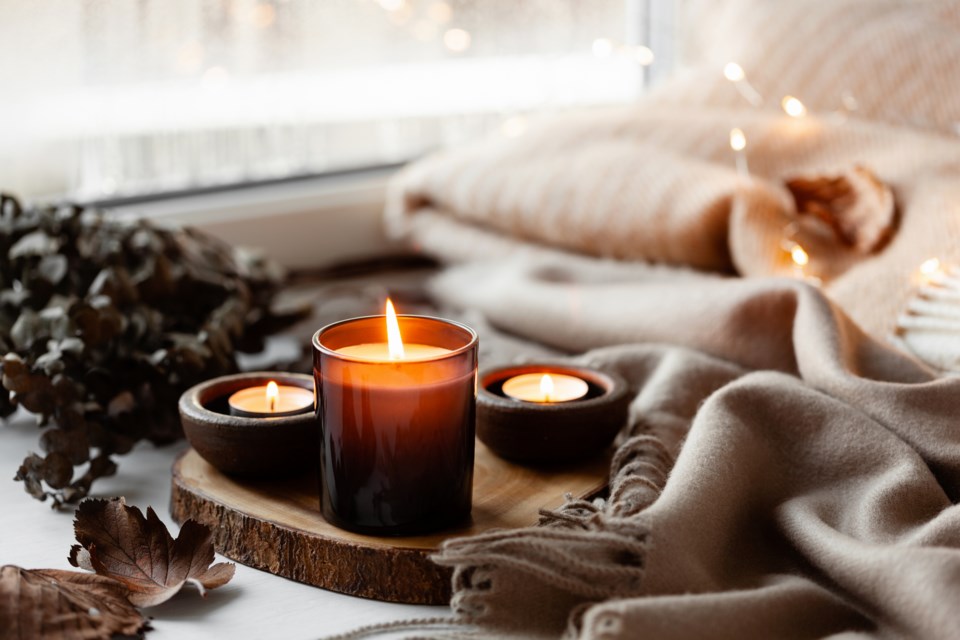Wellness retreats offer the opportunity to escape your responsibilities for a brief period of time with the general goal to improve overall well-being. These retreats come in many shapes and sizes and might take place in a remote location or a spa facility in the middle of a bustling city. The duration of a wellness retreat may last as little as a few hours to as long as several weeks.
Beyond barriers like cost and taking time off work is the fact that isolated jaunts to a spa won’t undo weeks and months worth of everyday anxiety and stressors. Frequent, regular visits are necessary to make a lasting impression on your well-being—and that’s not going to happen for most of us. Luckily, there are ways to bring the spa—and the revitalizing qualities that come with it—into your own home.
Sunday Citizen compiled a list of 10 ways you can transform your home into a wellness retreat, using information from wellness and home design experts. The strategies discussed here can be used whether you set aside a whole day of wellness-focused activities or snag a half-hour at the end of your hectic day to retreat into your own personal sanctuary.
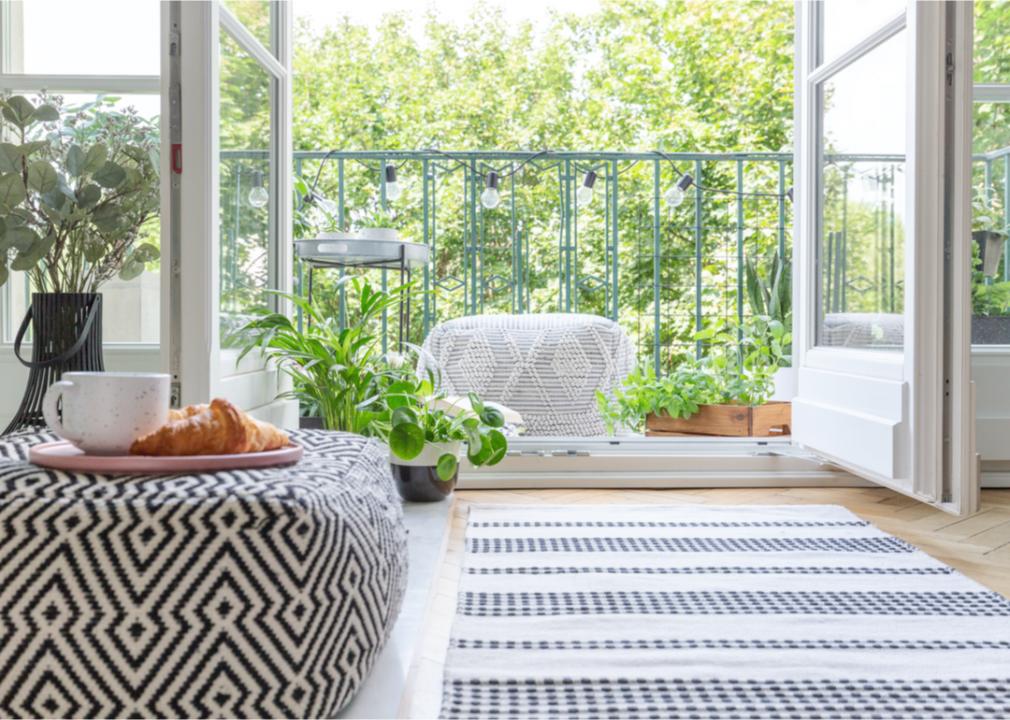
Photographee.eu // Shutterstock
Designate a relaxation area/sanctuary
It’s unlikely that every square inch of your home can be transformed into a relaxing spa-like environment, especially if you share your space with roommates, family, or pets. To start, focus on one area of your home that can be turned into a sanctuary. This could be an entire room if space isn’t an issue, but a corner of your living space will also do. If it’s the latter, incorporate a temporary partition to give the illusion of a separated space. Keep this area clean and clear of clutter.
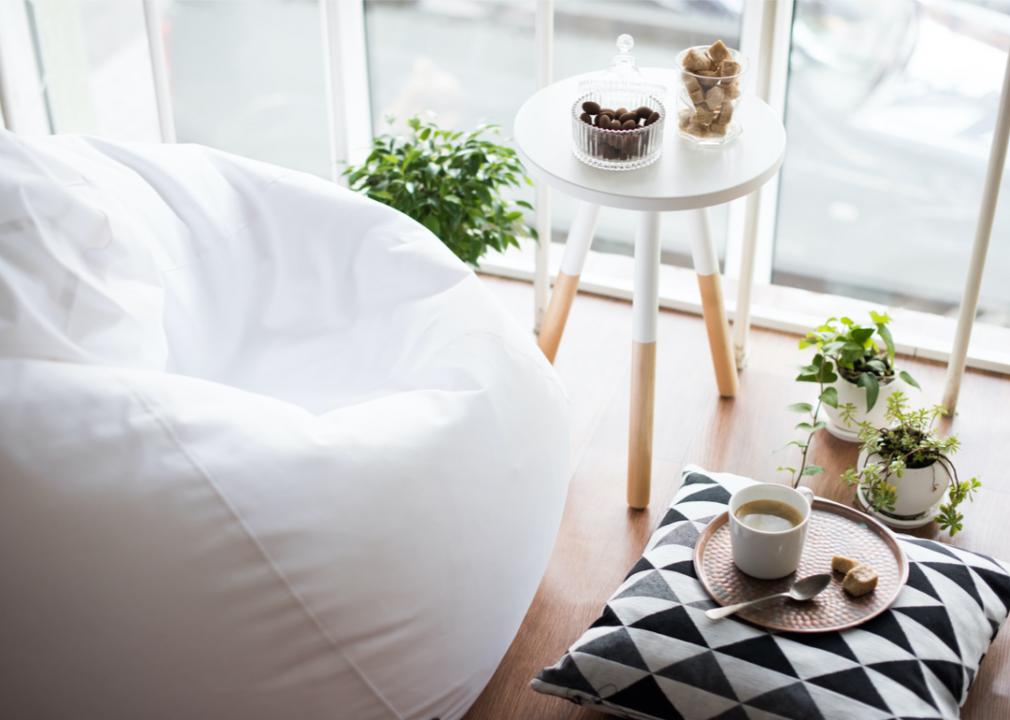
Daria Minaeva // Shutterstock
Consider the lighting
Light has a considerable impact on one’s general well-being, from mood to physical health. Exposure to natural light offers measurable health benefits, such as a boost to vitamin D levels, improved sleep, and decreased depression. If natural light isn’t available, or if you’re retreating into your wellness space after the sun has gone down, avoid fluorescent lighting, which can incite a stress response for some people. Instead, go for soft, layered lighting, which can be achieved with candles, incandescent bulbs and lamp shades, or various light therapy lamps, which have been proven to ward off symptoms of seasonal affective disorder.
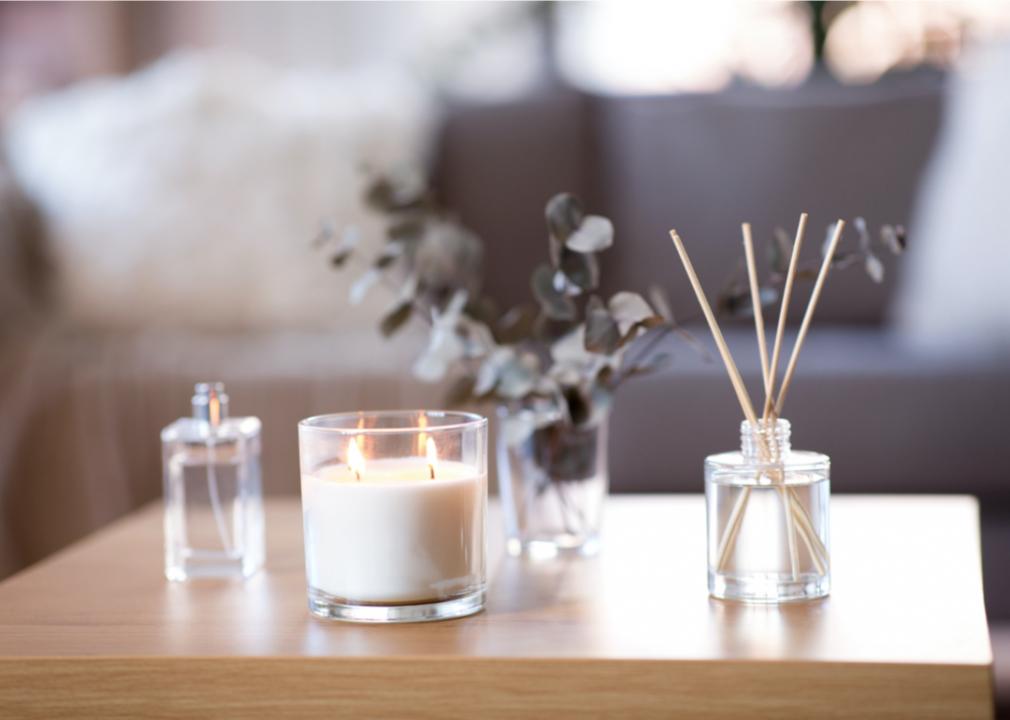
Syda Productions // Shutterstock
Add in aromatherapy
Scent is linked closely with our emotions, and can be a valuable and therapeutic part of a holistic approach to health and well-being. It’s important to only buy high-quality products from reputable companies to ensure you’re using pure essential oils with no chemical fillers. Popular essential oils include lavender, tea tree, eucalyptus, lemon, and peppermint, but ultimately, you should choose the scents that you find most positively affect your mood. Use essential oils topically with a carrier oil (such a coconut oil or jojoba), add several drops into an electronic diffuser, or try an aroma stick or inhaler.

polinaloves // Shutterstock
Invest in a fluffy robe and cozy slippers
A visit to a spa or wellness centre is incomplete without the complimentary robe and slippers. Be kind to your body and shed constricting or itchy fabrics and uncomfortable footwear that might be a distraction to achieving a sense of relaxation. A microwavable or freezable eye mask and weighted blanket can also help create a therapeutic experience.

Igor Serik // Shutterstock
Turn off devices
Spas and wellness centres or retreats are often a phone-free environment, and for good reason. In a 2018 study published in the Cyberpsychology, Behavior, and Social Networking journal, researchers found that being constantly connected to your smartphone can cause a state of “online vigilance,” in which the brain autonomously keeps track of notifications. Authors of the study say this state of alertness gets in the way of attaining mindfulness (being aware of your thoughts and feelings)—participants preoccupied with online communication even reported lower levels of satisfaction with their life.

mimagephotography // Shutterstock
Set aside time for journaling
Wellness programs or workshops frequently use journaling as an instrument for self-reflection as the practice of writing (or drawing) your thoughts and feelings can help manage mental health. If you’re not sure where to begin, search online for “journal prompts for self-reflection,” and you’ll find plenty of inspiration—but avoid feeling tied to any rigid rules and remember your journal should be a place to freely express yourself.

HealthyLauraCom // Shutterstock
Eat healthy meals, snacks, and drinks
You may not have a personal chef to cater to your nutritional needs, but you can easily replicate the healthy food and drink offerings found at a spa or wellness retreat. As for snacks, go for low-processed but filling snacks like nuts, fresh fruit, and vegetables with hummus. If you’re planning on a whole day at-home retreat, make sure to prep all your meals ahead of time to reduce stress—or order in healthy meals if preferred. Don’t forget the endless supply of fruit-infused water and herbal tea!

Kite_rin // Shutterstock
Practice meditation
The health benefits of meditation are long documented: Practicing meditation or meditative forms of yoga can help develop self-awareness, reduce stress and anxiety, support sleep, and even relieve chronic pain. If you’re not quite confident to go solo, there are endless resources to guide you through various styles of meditation, including free or low-cost apps or YouTube videos (an exception to the no smart device rule).

fizkes // Shutterstock
Treat yourself to DIY spa treatments
While not every spa treatment can be replicated at home without a therapist, with some creativity, you can achieve the same benefits of professional treatments. Collect your favourite skincare products or skincare tech and treat yourself to a spa facial—or use electric massage tools or massage balls to help deliver the vast health benefits of massage.
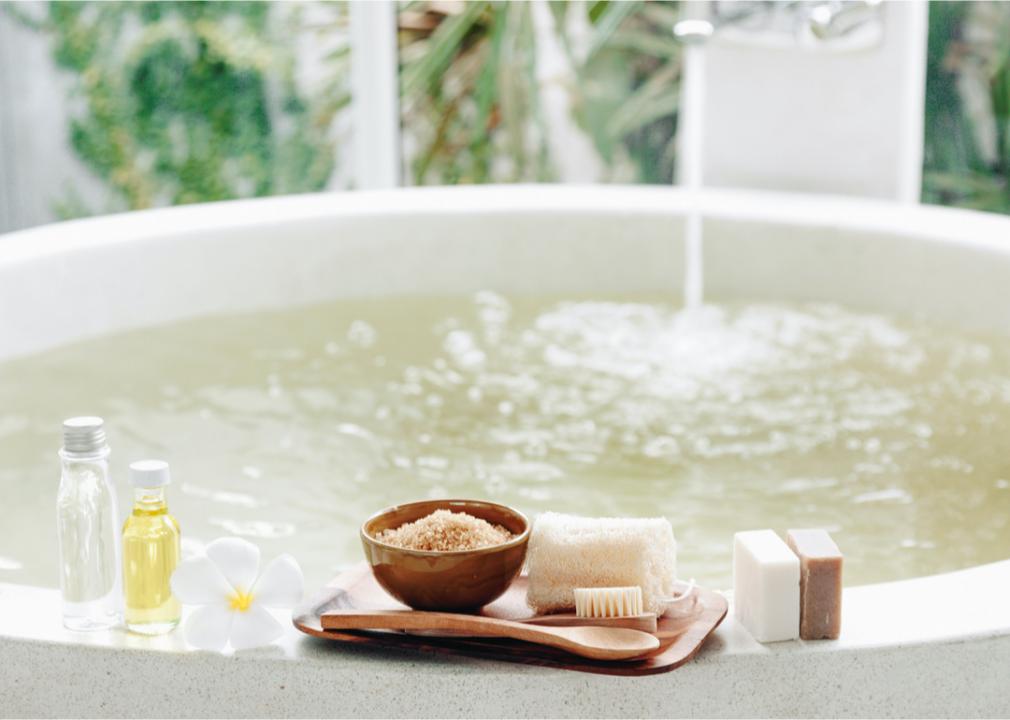
Alena Ozerova // Shutterstock
Set up an experience shower or bath
Water is a highly coveted feature at wellness centres and spas—from experience showers that replicate a rain forest complete with temperature changes and sounds of thunder and birds chirping to hydro pools that help lessen physical tension and pain. With some creativity, your at-home shower or bath can deliver some of the same benefits. Dim the lights (or light a few candles if your lights aren’t dimmable), infuse your bath with essential oils or gather scented products for your shower, and turn on some relaxing music or soundscapes.
This story originally appeared on Sunday Citizen and has been re-published pursuant to a CC BY-NC 4.0 License.
